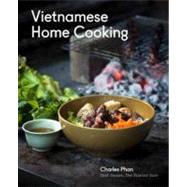
What is included with this book?
Charles Phan is the executive chef and owner of The Slanted Door family of restaurants, and the author of IACP award-winning book, Vietnamese Home Cooking. He received the James Beard Award for Best Chef California in 2004, and in 2011, was inducted into the James Beard Foundation’s Who’s Who of Food in America. He lives in San Francisco with his wife and their three children.
The New copy of this book will include any supplemental materials advertised. Please check the title of the book to determine if it should include any access cards, study guides, lab manuals, CDs, etc.
The Used, Rental and eBook copies of this book are not guaranteed to include any supplemental materials. Typically, only the book itself is included. This is true even if the title states it includes any access cards, study guides, lab manuals, CDs, etc.